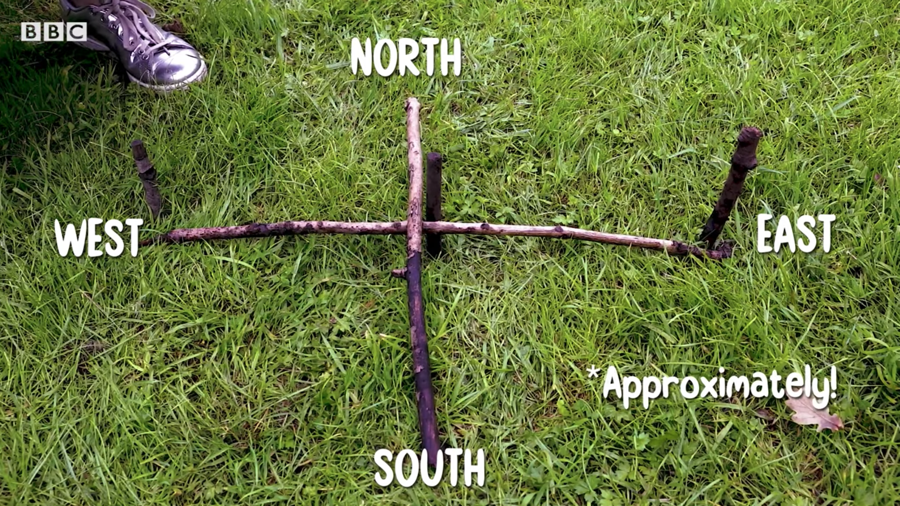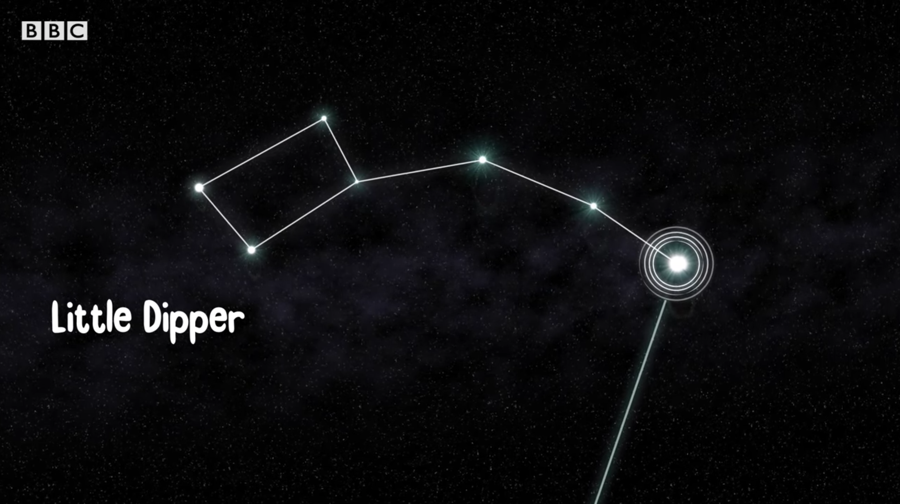In a world increasingly tethered to digital information, where GPS and smartphones are commonplace, it’s easy to forget that humans and animals have relied on Mother Nature’s navigational cues for thousands of years.
But what if there’s no phone signal or the phone runs out of battery? Would we get lost without modern conveniences?
What if we want to understand the clues and cues that nature provides? Can we navigate using nature?

The art of wayfinding is an ancient skill we can still learn to use. In this BBC Earth Kids wayfinding video, Fran Scott shares how to determine the four cardinal directions—north (N), east (E), south (S), west (W)—using the sun, shadows, sticks, stars, trees, and moss.
The shadow stick method can create a makeshift compass rose by marking shadow points as the sun moves across the sky. If you don’t have more than one stick, you can use rocks or other markers to note the points.

On a clear night in the northern hemisphere, finding Polaris, also known as the North Star, can help you find true north. Locate the Big Dipper (Ursa Major). The two stars at the end of its cup point to Polaris, the tip of the Little Dipper’s (Ursa Minor) handle. From NASA:
“Polaris is located quite close to the point in the sky where the north rotational axis points – a spot called the north celestial pole. As our planet rotates through the night, the stars around the pole appear to rotate around the sky. Over the hours, these stars each sweep out a circle around the celestial pole. The farther a star is from the pole, the larger the circle it travels around the sky. Some stars travel a great distance over the course of the night.
“Polaris is different. Because it’s so close to the celestial pole, it traces out a very small circle over 24 hours. So Polaris always stays in roughly the same place in the sky, and therefore it’s a reliable way to find the direction of north.”
On a clear night in the southern hemisphere, finding the Southern Cross or Crux and the two pointers (Alpha Centauri and Beta Centauri) can determine due south. This Lotsafreshair video demonstrates in less than a minute:
Fran Scott also demonstrates how deciduous trees can help wayfinders find their way. In the northern hemisphere, trees grow branches toward the sunlight in the southern sky; in the Southern Hemisphere, the trees grow toward the sun in the north.
Alternatively, moss prefers the cooler side of a tree; if you find deciduous trees—or other vertical smooth surfaces that aren’t close to the ground—with moss on only one side, that side may face north in the northern hemisphere and south in the southern hemisphere.
Important note: Because moss will grow anywhere moist and shady, check multiple trees for this pattern.

Related reading: The Natural Navigator and Moana shows the power of Polynesian celestial navigation.
Watch these related wayfinding videos next:
• How did Polynesian wayfinders navigate the Pacific Ocean?
• How to Make a Navigational Chart, a MetKids activity
• Lost Boy Remembers His Way Home – Sesame Street
• The GPS-navigated rolling of the dung beetle
Curated, kid-friendly, independently-published. Support this mission by becoming a sustaining member today.

